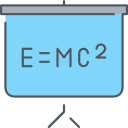
Skripsi
PRODUKSI HIDROGEN MELALUI ELEKTROLISIS AIR DENGAN MENGGUNAKAN MEMBRANE ELECTRODE ASSEMBLY (MEA) PADA ARUS, TEMPERATUR DAN KATALIS BERVARIASI
Penilaian
0,0
dari 5Hydrogen production by water electrolysis generally uses precious metal catalysts which can lead decrease of electrode resistance, because operates at high current densities. In this study, TiO2/C and Cu2O/C metal oxide catalysts were used on the cathode side and Pt/C catalyst on the anode. The catalyst made was characterized using X-Ray Diffraction (XRD) method. The XRD analysis results showed Cu2O pattern appear at 2 = 36.27°, 61.36° and 73.5°. TiO2 showed peak at 2 = 47.96°. Carbon was detected at 2 = 25°. The catalyst was distributed on the surface of the Gas Diffusion Layer (GDL) to produce an electrode. Electrode characterization showed the greatest Electrochemical Surface Area (ECSA) value was shown by electrodes with a Cu2O/C catalyst of 21.143 cm2/g, while the largest electrical conductivity values were found on electrodes with Pt/C catalysts of 0.0041 S/cm. Electrochemical Impedance Spectroscopy (EIS) measurements show Pt/C electrodes have the smallest real resistance of 3.46 Ω, indicating that these electrodes have a large ionic conductivity capability. The highest hydrogen production rate produced by MEA with Pt/C and Cu2O/C electrodes that operate optimally at 2 A by 6.881 mL/s, while MEA with Pt/C and TiO2/C electrodes only works optimally at 1 A with a production rate hydrogen at 2.809 mL/s. The rate of hydrogen production in the two MEAs increased with increasing operating temperatures and reached the highest value at 70℃ which is the highest temperature in this study. Increasing the operating temperature can reduce the consumption of electrical energy in hydrogen production, so that it can be a solution for operating cost efficiency.
Availability
| Inventory Code | Barcode | Call Number | Location | Status |
|---|---|---|---|---|
| 2007001887 | T31934 | T319342020 | Central Library (REFERENCES) | Available but not for loan - Not for Loan |
Detail Information
- Series Title
-
-
- Call Number
-
T319342020
- Publisher
- Inderalaya : Jurusan Kimia, Fakultas Matematika dan Ilmu Pengetahuan Alam Universitas Sriwijaya., 2020
- Collation
-
xvii, 66 hlm. : ilus. ; 21 cm
- Language
-
Indonesia
- ISBN/ISSN
-
-
- Classification
-
546.207
- Content Type
-
Text
- Media Type
-
unmediated
- Carrier Type
-
-
- Edition
-
-
- Subject(s)
- Specific Detail Info
-
-
- Statement of Responsibility
-
DS
Other version/related
No other version available
File Attachment
Comments
You must be logged in to post a comment
 Computer Science, Information & General Works
Computer Science, Information & General Works  Philosophy & Psychology
Philosophy & Psychology  Religion
Religion  Social Sciences
Social Sciences  Language
Language  Pure Science
Pure Science  Applied Sciences
Applied Sciences  Art & Recreation
Art & Recreation  Literature
Literature  History & Geography
History & Geography